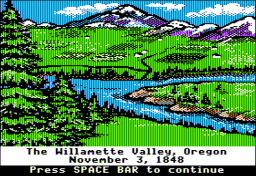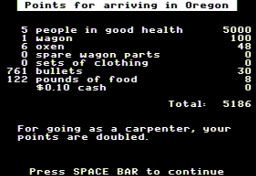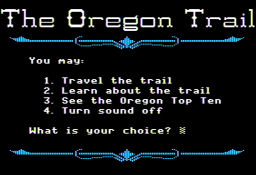 The Game: Hitch up your wagons and head west! It’s 1848 and you and your family are provisioning a covered wagon to leave Independence, Missouri to reach Oregon by the end of the year (and before the weather turns against you). You decide your character’s skills/background, how much of your limited funds to spend on supplies ranging from food to to clothes to wagon spares to ammunition, and you set out westward. There are many stops along the way, and many hazards to face – and plenty of ways to die on the journey that don’t even involve dysentery. (Minnesota Educational Computer Corporation, 1985)
The Game: Hitch up your wagons and head west! It’s 1848 and you and your family are provisioning a covered wagon to leave Independence, Missouri to reach Oregon by the end of the year (and before the weather turns against you). You decide your character’s skills/background, how much of your limited funds to spend on supplies ranging from food to to clothes to wagon spares to ammunition, and you set out westward. There are many stops along the way, and many hazards to face – and plenty of ways to die on the journey that don’t even involve dysentery. (Minnesota Educational Computer Corporation, 1985)
Memories: Let’s just jump straight to the end of the review and point out something that’s already very well known – The Oregon Trail is one of the best constructed educational software titles in the history of educational software titles. It’s not just informative, but fun and suspenseful and immersive as well.
Now back to the beginning of the review: how in the world does one create an educational game – one of the genres most dreaded by young players throughout the history of computer software – and make it a really good game for the ages? Surely that takes years and years of development, right?
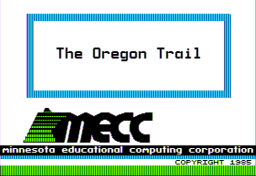 Fortunately, that’s precisely what happened. By the time is was ported to the Apple II, The Oregon Trail already had quite a few miles on… well… whatever passes for an odometer on a covered wagon. It had started as a project by Don Rawitsch, Bill Heinemann, and Paul Dillenberger, in the days when computers in educational environments were more likely to show their output via teletype rather than on a monitor. Even in that early form, it was a hit students. In 1978, it was ported to the original 16K Apple II computer by the Minnesota Educational Computer Corporation, though without the graphical elements that are now so closely identified with the game; it was essentially the same as the teletype game, except using a monitor for output instead of paper.
Fortunately, that’s precisely what happened. By the time is was ported to the Apple II, The Oregon Trail already had quite a few miles on… well… whatever passes for an odometer on a covered wagon. It had started as a project by Don Rawitsch, Bill Heinemann, and Paul Dillenberger, in the days when computers in educational environments were more likely to show their output via teletype rather than on a monitor. Even in that early form, it was a hit students. In 1978, it was ported to the original 16K Apple II computer by the Minnesota Educational Computer Corporation, though without the graphical elements that are now so closely identified with the game; it was essentially the same as the teletype game, except using a monitor for output instead of paper.
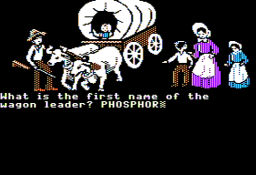
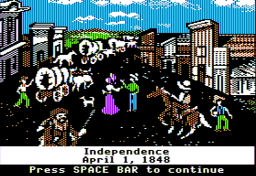
In 1985, having seen their 1978 version remain a popular favorite, MECC updated the game to take advantage of the speed of the Apple IIe, which was still a classroom fixture. With the enhanced capabilities of the IIe, parts of the game that previously took place entirely in text now became mini-marvels of real-time interaction, complete with graphics (though it now took up – gasp! – both sides of a floppy disk). Whether hunting for food or floating the family wagon down the rapids to reach the end of the game, these portions of the game were reasonably close to arcade-style action. Previous students who had played the earliest iterations of The Oregon Trail may have been thrilled, but the new version would satisfy the demands of a generation of kids who had also grown up with arcade and console games.
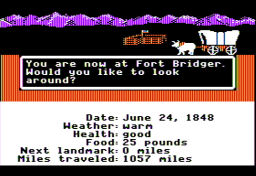
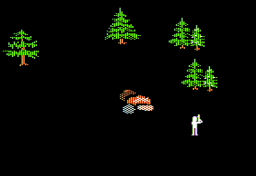
Many of the game’s setbacks and incidents, though, were still a roll of the electronic dice, randomized invisibly: injuries and disease (including the dreaded death-by-dysentery that practically became The Oregon Trail’s calling card) would befall family members at the most inopportune time. Not everyone would necessarily make it to Oregon in their quest for a better life. The probability of such events, however, was tweaked by Rawitsch in the 1970s, based on his own historical research. Encounters with roaming Native Americans were now more likely to end with them helping the player…provided the player responded to their appearance in the game peacefully.
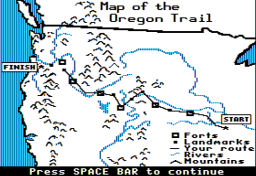
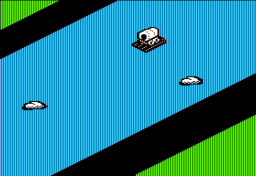
Versions of the game followed for nearly every computer platform under the sun will into the early 90s, though it seemed to fade from memory until it roared back into the public consciousness in the 21st century, as the kids who grew up with the original game – whether in its all-text or graphical form – were now adults standing at the always dangerous intersection of spending power and nostalgia. The Oregon Trail has been revived as a card game, as a standalone portable game, and yes, as the source of many a meme and pop culture reference. But its longevity and nostalgia don’t seem to be driven by oh-so-twenty-first- century smirking irony. The Oregon Trail has not died of either dysentery or snark.
century smirking irony. The Oregon Trail has not died of either dysentery or snark.
And that’s how a piece of edutainment software becomes one for the ages. By being engaging, informative, and fun at the same time.
